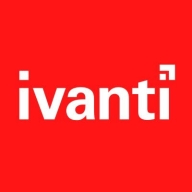


Tanium and Ivanti Neurons for MDM compete in the mobile device management category. Tanium holds an advantage in security and threat detection, while Ivanti shines in comprehensive management and automation.
Features: Tanium's key features include advanced security measures, real-time threat detection, and analytics capabilities. Ivanti Neurons for MDM excels with robust device management, automation of tasks, and seamless integration capabilities.
Room for Improvement: Tanium could improve its ease of setup and deployment time. Enhanced user-friendliness and simplified management could also be beneficial. Ivanti Neurons for MDM may improve by expanding security-focused features, refining real-time monitoring capabilities, and ensuring more advanced threat detection features.
Ease of Deployment and Customer Service: Ivanti Neurons for MDM is known for straightforward deployment and efficient automation, supported by responsive customer service. Tanium's deployment might require a more technical setup due to its security focus, but its customer service is comprehensive.
Pricing and ROI: Tanium's higher setup costs reflect its advanced security features, offering satisfactory ROI for security-focused organizations. Ivanti Neurons for MDM provides a cost-effective pricing model with strong automation, leading to a favorable ROI, especially for those seeking extensive MDM solutions without high upfront costs.
| Product | Market Share (%) |
|---|---|
| Microsoft Intune | 31.0% |
| Tanium | 4.9% |
| Ivanti Neurons for MDM | 3.3% |
| Other | 60.800000000000004% |



| Company Size | Count |
|---|---|
| Small Business | 116 |
| Midsize Enterprise | 46 |
| Large Enterprise | 152 |
| Company Size | Count |
|---|---|
| Small Business | 3 |
| Midsize Enterprise | 2 |
| Large Enterprise | 3 |
| Company Size | Count |
|---|---|
| Small Business | 5 |
| Midsize Enterprise | 3 |
| Large Enterprise | 11 |
Microsoft Intune provides centralized management of mobile devices and applications, ensuring security, compliance, and productivity through integration with Microsoft services like Microsoft 365 and Azure Active Directory.
Organizations use Intune for managing mobile devices and applications, enhancing security and compliance across platforms. With features like single sign-on, conditional access, and zero-touch deployment via Autopilot, it facilitates efficient operations. Intune's scalability, easy enrollment, and capabilities such as remote wipe support diverse device management, offering robust data protection and efficient operation. Despite its features, improvement areas include reporting, compatibility with non-Microsoft devices, and better support for macOS and Linux devices.
What are the key features of Microsoft Intune?
What benefits should users look for in reviews?
In industries such as finance, healthcare, and education, Microsoft Intune is implemented to ensure secure and compliant device management. Companies leverage its capabilities to deploy security policies and manage both corporate-owned and BYOD environments, facilitating a unified approach to data protection and compliance.
Everywhere Work is here
Dealing with increasing demand for devices, applications and platforms?
Ivanti Neurons for MDM is your single solution to manage iOS, iPadOS, Android, macOS, ChromeOS and Windows.
Cloud‑based device management and security
Secure and manage endpoints running iOS, iPadOS, Android, macOS, ChromeOS and Windows.
Simple onboarding and provisioning process
Quickly and easily onboard devices and provision them over the air with all the apps, settings and security configurations they need.
Seamless, productive user experience
Deliver a delightful, native user experience across any device and OS while improving productivity.
Reduce the complexity and cost of endpoint management
Manage and protect any iOS, iPadOS, Android, macOS, ChromeOS, Windows and VR/XR device, from a single cloud-based solution.
Manage devices everywhere business happens
Know the devices your supply chain workers rely on are updated and in good operating condition, ready for the day’s business.
Tanium offers robust endpoint protection, patching, and inventory management, consolidating the functions of tools like BigFix with capabilities in incident response, network security, and cloud or on-premise deployments.
Known for real-time capabilities, Tanium provides detailed analytics, security features, and device management. Users benefit from quick implementation, real-time updates, and patching campaigns. Despite its strengths, integration and custom plugin expansion remain areas to improve, along with data visualization and network optimization. Reporting enhancements and user training could advance its usability, and some UI elements may require updates for clarity and security.
What are the essential features of Tanium?Tanium's deployment spans industries focusing on endpoint protection and compliance, ensuring reliable device and server management in settings where safety and quick adaptation are critical. Organizations use it for application deployment, compliance checks, and integrating it as an EDR solution, enhancing overall security and operational efficiencies.
We monitor all Unified Endpoint Management (UEM) reviews to prevent fraudulent reviews and keep review quality high. We do not post reviews by company employees or direct competitors. We validate each review for authenticity via cross-reference with LinkedIn, and personal follow-up with the reviewer when necessary.